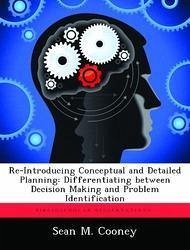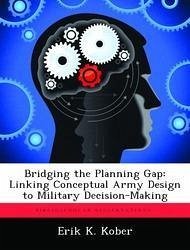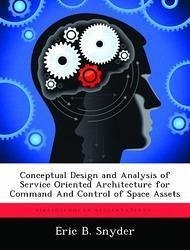Nicht lieferbar

Re-Introducing Conceptual and Detailed Planning: Differentiating between Decision Making and Problem Identification
Versandkostenfrei!
Nicht lieferbar
Since its introduction, Army Design Methodology (ADM) has met resistance from senior military leaders. This monograph researches the question why ADM faces resistance among senior Army officers. The resistance to integrating ADM within the Army originates from the historical reliance on the Military Decision-Making Process (MDMP) and its past success. The research conducted in this monograph leads the author to believe a major reason for this resistance is that officers are confused about what MDMP does and what ADM does. MDMP provides a decision-making tool. ADM provides a problem identificat...
Since its introduction, Army Design Methodology (ADM) has met resistance from senior military leaders. This monograph researches the question why ADM faces resistance among senior Army officers. The resistance to integrating ADM within the Army originates from the historical reliance on the Military Decision-Making Process (MDMP) and its past success. The research conducted in this monograph leads the author to believe a major reason for this resistance is that officers are confused about what MDMP does and what ADM does. MDMP provides a decision-making tool. ADM provides a problem identification tool. ADM as a problem identification tool utilizes conceptual thought to define problems. Defining problems creates structure to allow decision-making and detailed planning. Confusion about ADM results from not understanding the value of conceptual thought in problem identification to facilitate solving ill-structured problems. An integrated planning approach must consist of both detailed planning and conceptual thought. Both well-structured and ill-structured problems benefit from an integrated planning approach. This author concludes that the addition of a simplified "Define Step" within MDMP would facilitate the integration of conceptual thinking with detailed planning. A define step assimilates the most significant aspect of ADM, the ability to successfully define or frame a problem. The monograph introduces the idea of a reformatted version of MDMP with a simplified conceptual design step, called "define" based on the model of the Six Sigma Methodology. Six Sigma problem solving and improvement planning methodologies apply to both well-structured and ill-structured problems.









